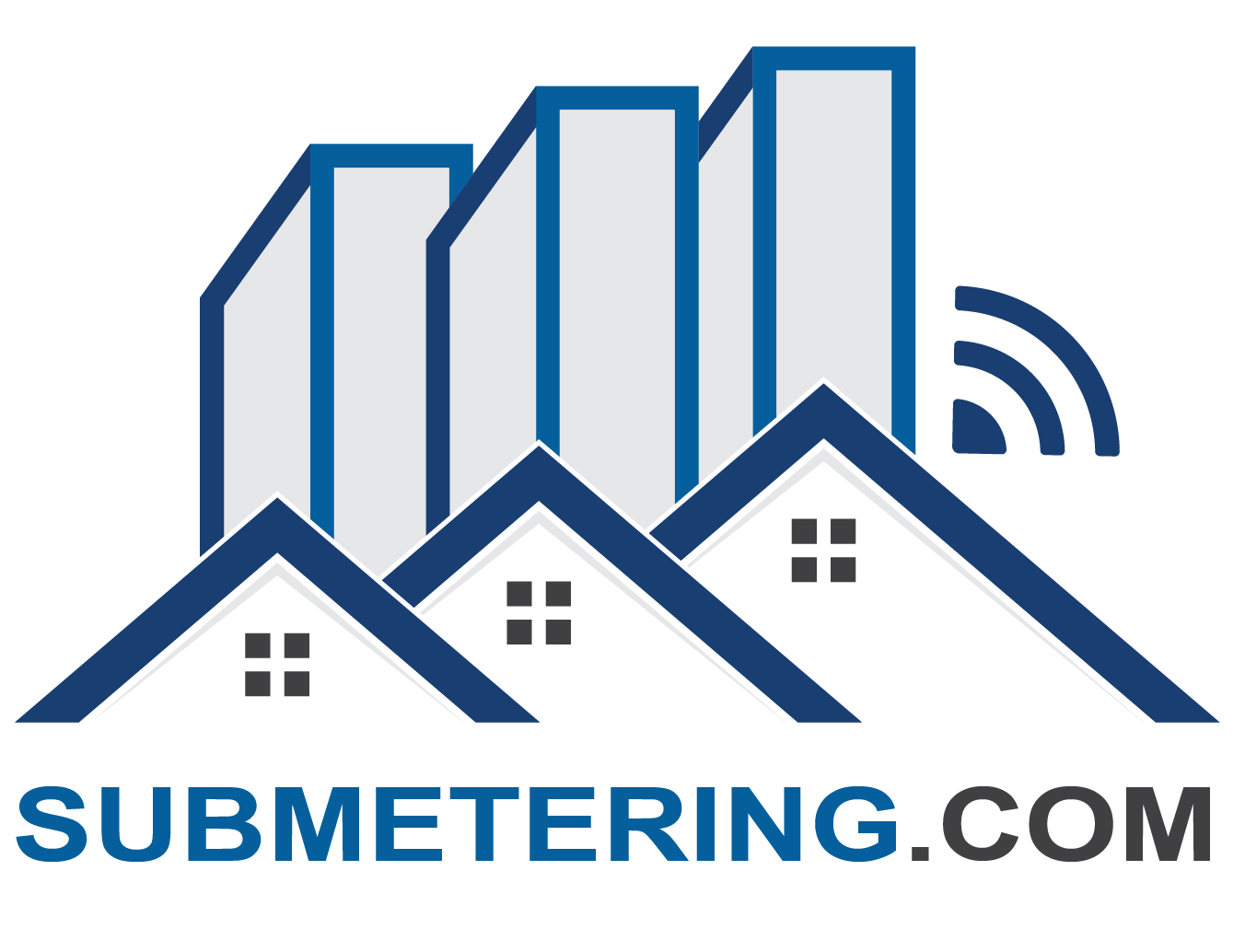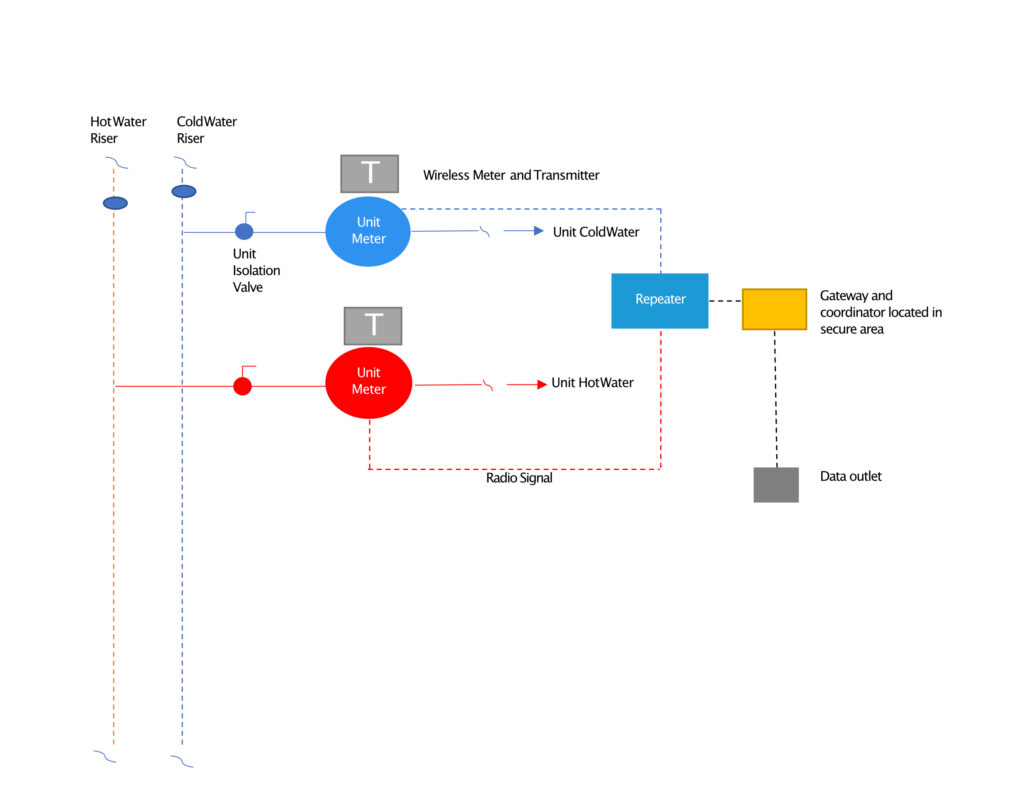
Water Submeter Installation
Here are some basics on a submeter installation for new construction. This will give you an idea of what is involved.
Phase 1 – Couplings and Flow Tubes
Spacer tubes are installed during the rough-in plumbing stage in place of the meters. Meters cannot be installed until the system has been flushed and pressure-tested, the spacer tubes take the place of the meter during this process, because the meters would be destroyed during pressure testing. The flow tubes act as placeholders until the meters are installed. Phase one is the least expensive and usually the longest phase of the project.
Phase 2 – Meters and Transmitters
Once the system has been flushed and pressure-tested the actual meters can be installed by a master plumber. Each Meter/Transmitter set is a meter with a transmitter connected and strapped to it. Each meter has a wire coming out of the head called a “pulse wire.” As the meter counts it sends a pulse through that wire to indicate usage has been recorded. A transmitter is connected to that wire to receive the meters counts. The transmitter then sends that information wirelessly to the central electronics.
Phase 3 – Central Electronics
Usually, around or just after TCO, the Central Data Collector and signal boosters are installed. The Central Data Collector requires access to a standard wall power outlet and an active Ethernet connection. We recommend that this is installed somewhere on the base floor of residential units, that has little to no resident access (i.e. COM Room, IDF Closet). The signal boosters will get installed on every other floor of the building. We recommend that these also get installed in a COM or IDF room. Signal boosters also require a standard wall power outlet. The system works is that the transmitters send the meter counts wirelessly to the Central Data Collector, which collects and stores the data, and then pushes it to the web for online meter reading. The signal boosters simply help to create a strong signal throughout the building so that the transmitters can make it to the Central Data Collector. Finally, the system can be tested by your billing provider.


+ There are no comments
Add yours